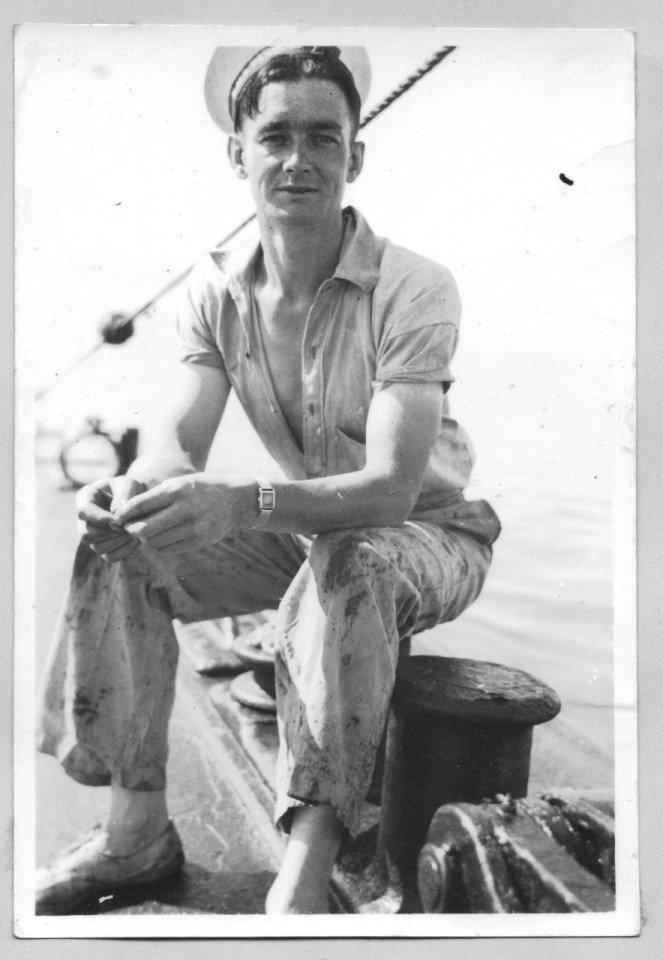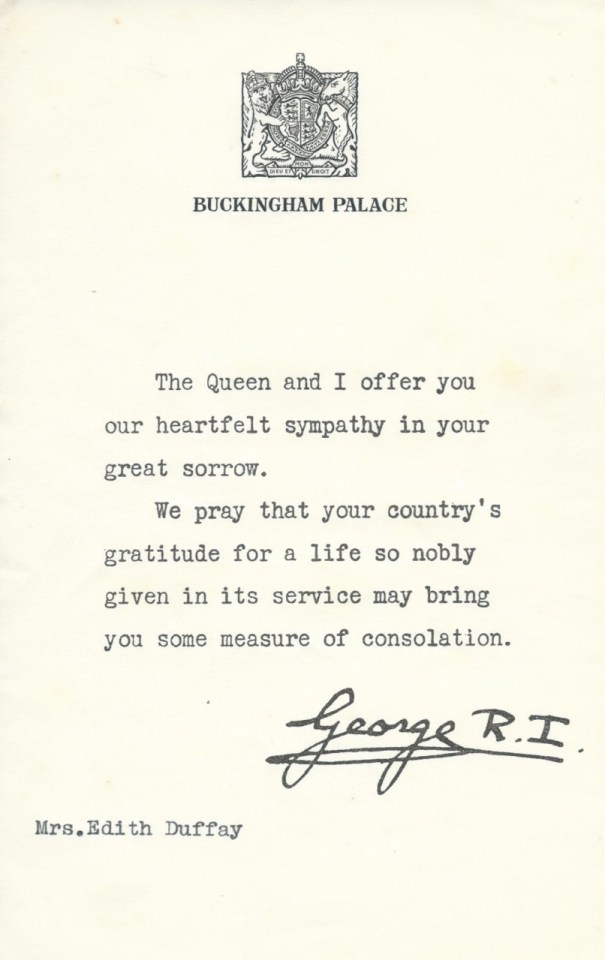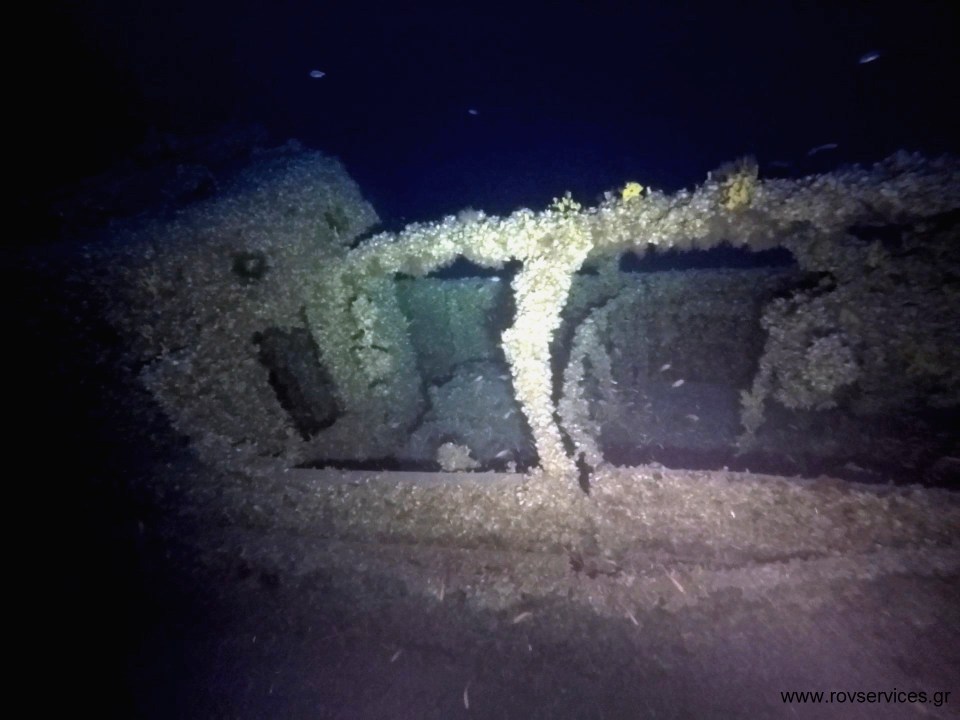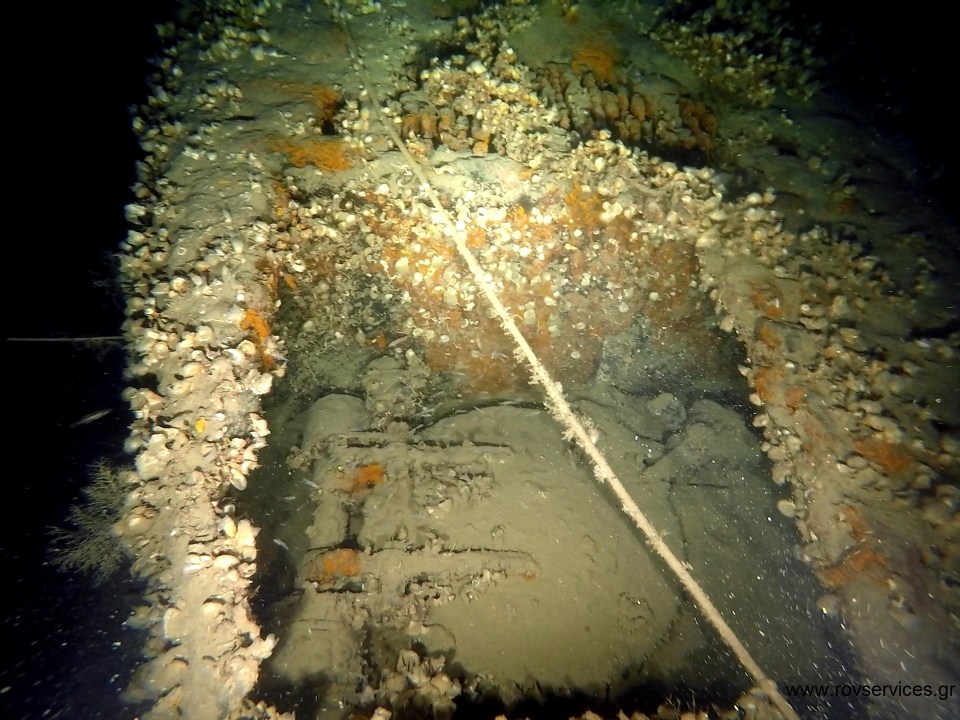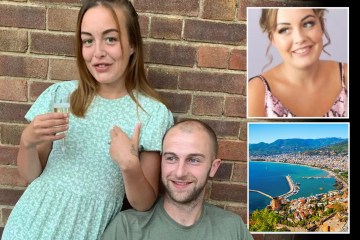THEY are the heroic lost souls of one of the Royal Navy’s crack submarines, who went missing on a top-secret World War Two mission more than 80 years ago.
The 64 young men of HMS Triumph shared a remarkable 36 medals for bravery before they vanished without trace in the Aegean Sea in January 1942.
But HMS Triumph has now been found, with her crew sealed in the tomb of their sunken sub 666ft below the surface.
And today families of those who died tell The Sun of their relief and sadness as it was announced last week that the final resting place had been discovered by veteran Greek wreck diver Kostas Thoctarides.
Haunting images from a remotely operated vehicle show her steel hull almost intact, hatches sealed shut.
Gav Don, a former Royal Navy officer whose uncle Lt Robert Don died on Triumph, said: “It is a very poignant moment. Inside that boat, just a few feet from the camera, are the graves of our boys.”
READ MORE ON WW2
Jane Swan, whose uncle, Lt Arthur Collins, 25, died on Triumph, said: “We have been waiting for news all our lives. Now we have an answer. Arthur and his crewmates are together.”
The images released by Kostas are the first confirmation of Triumph’s fate since she went missing.
Describing how he found the sub, Kostas told The Sun it marked the end of an exhausting search lasting almost 25 years.
Long quest for truth
He said: “Triumph was for me a lifetime goal. When the stern emerged from the dark abyss of the Aegean Sea on the monitor, I had no doubt I was finally looking at the legendary submarine. It was very moving.
Most read in The Sun
“I was in awe that I had the opportunity, after all these years of research, to witness this image.”
For more than 150 relatives of the crew around the UK, this is the end to their long quest for truth.
Triumph was one of the Royal Navy’s most successful World War Two subs, sinking 15 enemy ships in just eight months.
She is believed to have been hit by an underwater explosion near Cape Sounion, site of the spectacular Temple of Poseidon, one of Greece’s most iconic landmarks.
Kostas said there was no escape for the crew as the 1,300-ton, 275ft sub sank.
He added: “My opinion is that all 64 heroes are in the submarine, as they were in a deep dive and all hatches are closed.
“HMS Triumph must be treated with the respect and sanctity that it deserves as a maritime war grave.”
For relatives of the crew — former City worker Gav has been in contact with more than 150 — the find has triggered mixed emotions.
There is relief the men have been found but sadness over their brave sacrifice and tragic final moments.
Lucie Winter, 49, from Oxford, whose great-uncle Able Seaman Billy Hall, 21, from Burton-on-Trent, died on the sub, said: “There was never any closure so it is particularly poignant now that we know. Billy is still very much part of our family.
“His mother died when he was young so my grandmother helped bring him up.
"They were very close and it was devastating for my grand-mother when he was lost. When you see the wreck, it is hard to think of such a gruesome end.
“Billy was so young, just a school-boy when he joined up. But they were so brave, they knew the risks and the chances of never coming back.”
Candid pictures of Billy and his crewmates in the weeks and months before the tragedy show them smiling and laughing, enjoying shore leave or with family at home, brave young men who volunteered for one of the most dangerous tasks in the British services in World War Two.
Tragically, HMS Triumph had been scheduled to sail back to Britain for Christmas from her base in Alexandria, Egypt, before she was lost.
Her crew had even stuffed presents into the cramped quarters for their families at home.
But at the last minute another sub suffered a technical problem and her crew was ordered to make one more hazardous mission before their leave.
Jane Swan, niece of Lt Edward “Arthur” Collins, 25, from Leigh-on-Sea, Essex, has his last letters sent before the fateful trip. Arthur was on his first submarine mission.
Jane, 75, from Lancaster, said: “My mother Evelyn and her brother Arthur were very close and so affectionate.
"He would write regularly. A few days before they sailed he wrote from Alexandria.
"He said he had been shopping for some nice sports shoes, and that there was plenty of fruit and eggs.
"Then there was nothing more. My mother’s letters were just returned. That was the end. But he lived on in our family.”
Arthur’s sweetheart Dorothy died in 2020, aged 106, never knowing what had happened to her boyfriend. The same was sadly true for the other crew’s wives, girlfriends and parents.
Some of the families still have the letter of condolence they received from King George VI. Kostas added: “Triumph appears to have sunk due to a powerful explosion in the fore section but the cause is still unclear.”
Soon after starting her descent to the bottom, her crew would have realised there was no escape.
For Gav, the fate of Triumph is a stark reminder of the toll the war took on the brave young men who signed up for the Royal Navy’s submarine service.
He said: “At the start of the war there were 2,500 men, serving in around 70 Royal Navy subs. Of those, at the end of the war there were 150 left in the service.
"The attrition rate was astronomically high. Almost 80 per cent were lost.” Gav’s uncle, gunnery officer Lt Robert Don, was an example of the bravery of those who served.
Before his death, aged just 24, Lt Don was a Dunkirk veteran and had won an astonishing three Distinguished Service Crosses for bravery, including one from the Battle of River Plate in 1939 when Nazi battleship Admiral Graf Spee was pursued by British warships before being deliberately sunk by its crew off Uruguay in South America.
Gav said: “His story is remark-able but this was true of so many of Triumph’s crew.
"The crew as a whole had already won 36 medals before they were lost. They were incredibly brave young men.”
Janet Noble, 62, from Gateshead, whose grandfather George “Harry” Cross, 31, died, said that she hoped in his final moments he felt close to his beloved wife Kitty and two young children Brian and Brenda — who would become her mum.
A picture taken shortly before the last trip shows Harry smiling as he enjoys a beer in Alexandria.
Janet said: “You will always wonder what happened at the end. Maybe we will find some answers but some of it we’ll probably never know.
“Did they know what was happening? Was he thinking about Kitty, Brian and Brenda?
“My gran kept a trunk in the bedroom of Harry’s letters and mementos. There has always been this missing part of life.
For me, it’s updating history, filling in an important gap. And it’s a reminder today of what service really meant, what these men did in the war.
“Harry has five grandchildren, six great-grandchildren and five great-great-grandchildren. That is his legacy and it lives on.”
Gav, who has devoted years of painstaking research to pulling together the story of the Triumph’s crew and her fate, formed the HMS Triumph Families Association ten years ago.
He has helped bring together relatives of those who served and died on the sub.
Almost every area of Britain was represented on the crew, from Plymouth to and Liverpool to Lincolnshire.
Following the wreck’s discovery, Gav is now organising a trip to the site for the families. There they will hold a service of remembrance and drop wreaths into the sea for their loved ones.
Lucie told how she intends to take her teenage daughter Ella, 17, and son Tommy, 16, on the pilgrimage to Greece.
She said: “We will be there. Billy remains part of our family. My daughter Ella and, in particular son Tommy, know about him and Tommy has been with us to a service.
“What has been so special about this is meeting the other families and sharing this. And also the remarkable work by Kostas and his team and Gav. We will never forget that.”
The families are also in touch with the crew of the current HMS Triumph, a nuclear submarine based in Scotland at Faslane, Argyll and Bute.
A picture of the previous Triumph’s World War Two crew hangs on the wall of their mess.
The wreck, whose exact location is known only to Kostas and his close team, is now formally designated as a war grave by the Ministry of Defence and protected by strict archaeology laws by the Greek authorities.
For Gav and the families, her discovery closes an intriguing but deeply personal and often heart-breaking chapter in their lives.
Read More on The Sun
He said: “For all of us there has always been a sense of a hole, a gap, in the family history, something missing.
“Thanks to the work of Kostas we are now able to fill that gap. It is the end of a very long quest.”
FINAL DASH TO SEA
SAILING on Boxing Day 1941, the Triumph had dropped MI9 spies and Special Operations Executive agents on the tiny Greek island of Antiparos.
It was a perilous and critical part of the war effort as the British tried to establish links with the Greek resistance and rescue escaped Allied prisoners of war after the fall of Greece.
The plan was for Triumph to return 14 days later to collect them from a secret supply base stacked with fuel and arms, codenamed Coney Island.
It was a dangerous journey, but one her crew had made several times.
The start of the mission went well. The agents, led by Lt George Atkinson, were set down and the sub set out to hunt enemy ships before she was due to return to collect the escaped PoWs.
A group of British, New Zealand and Australian soldiers were already on the beach ready, but as Triumph had orders to continue her patrol she had to leave them until her return.
Tragically, the mission was to become a disaster on land and at sea.
Within days the agents were captured after a gun battle with Italian soldiers.
Against orders, Lt Atkinson had a list of Greek resistance fighters on him, which was passed to the German secret police, the Gestapo.
Atkinson was later tried as a spy by the Italians and executed in 1943. The botched mission badly damaged relations between the Greek resistance and the British.
As the spies faced disaster onshore, the Triumph was also heading for trouble.
On January 9, 1942, as she prepared to return to Antiparos, the last known sighting of her was made when she attacked an enemy ship off Cape Sounion. Her torpedo missed, exploding in a fireball on the Aegean coast under the eyes of German military outposts.
It is thought she dived and made a dash for safety out to sea. It was there she met her fate.













